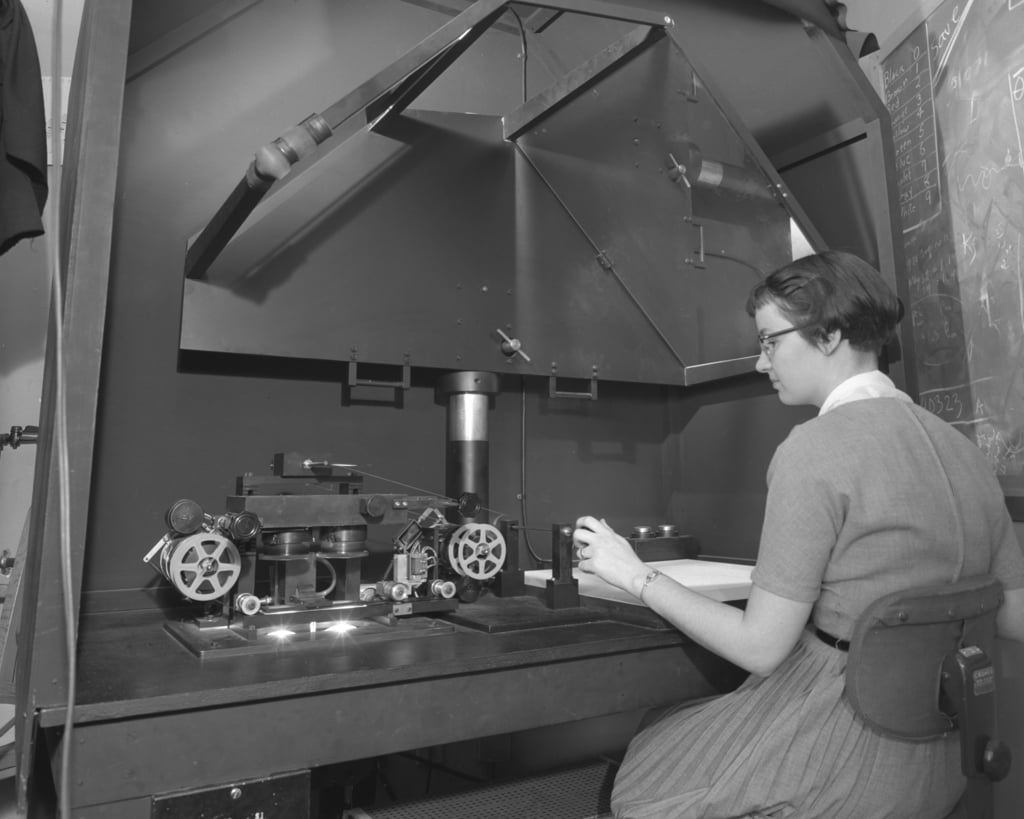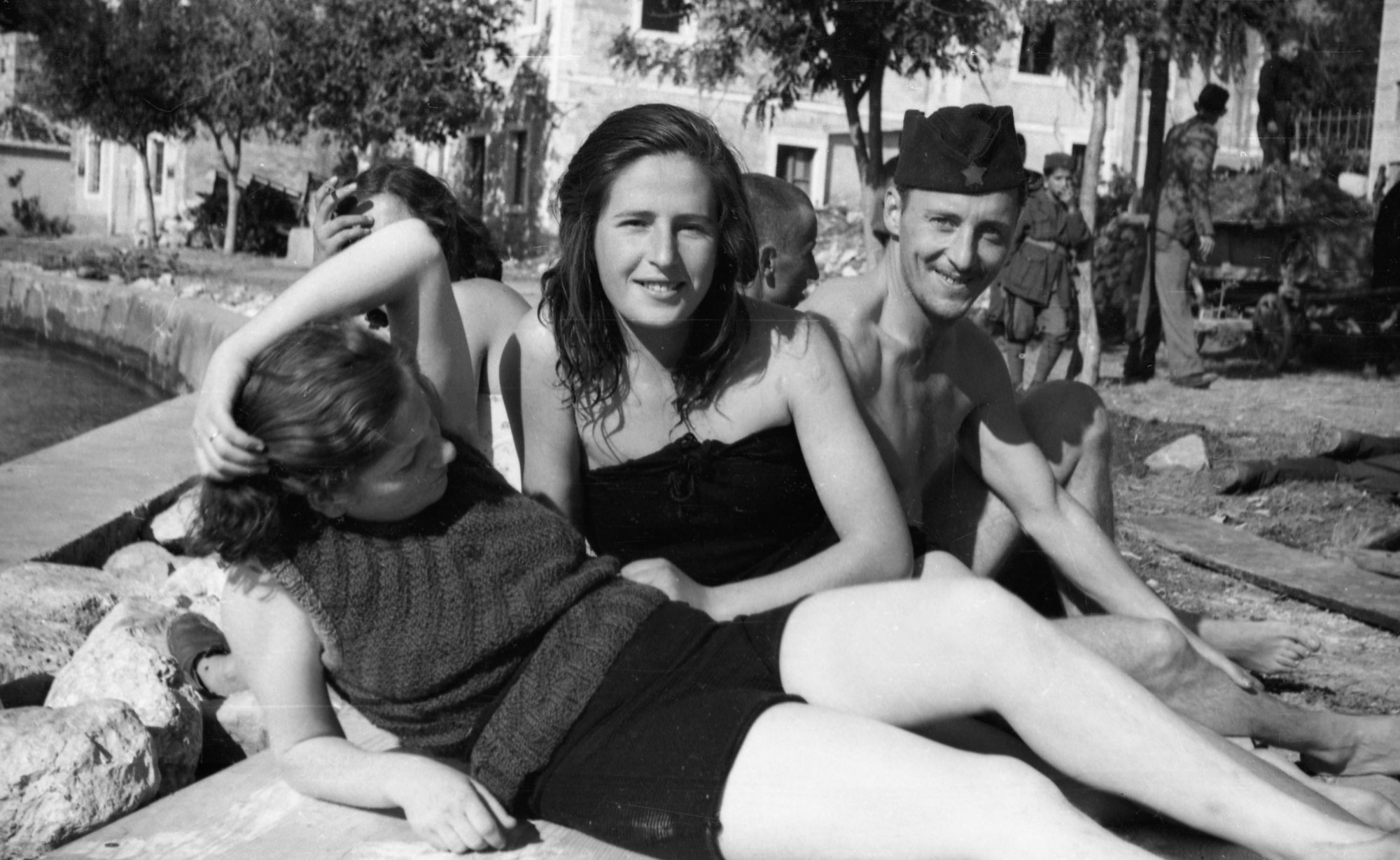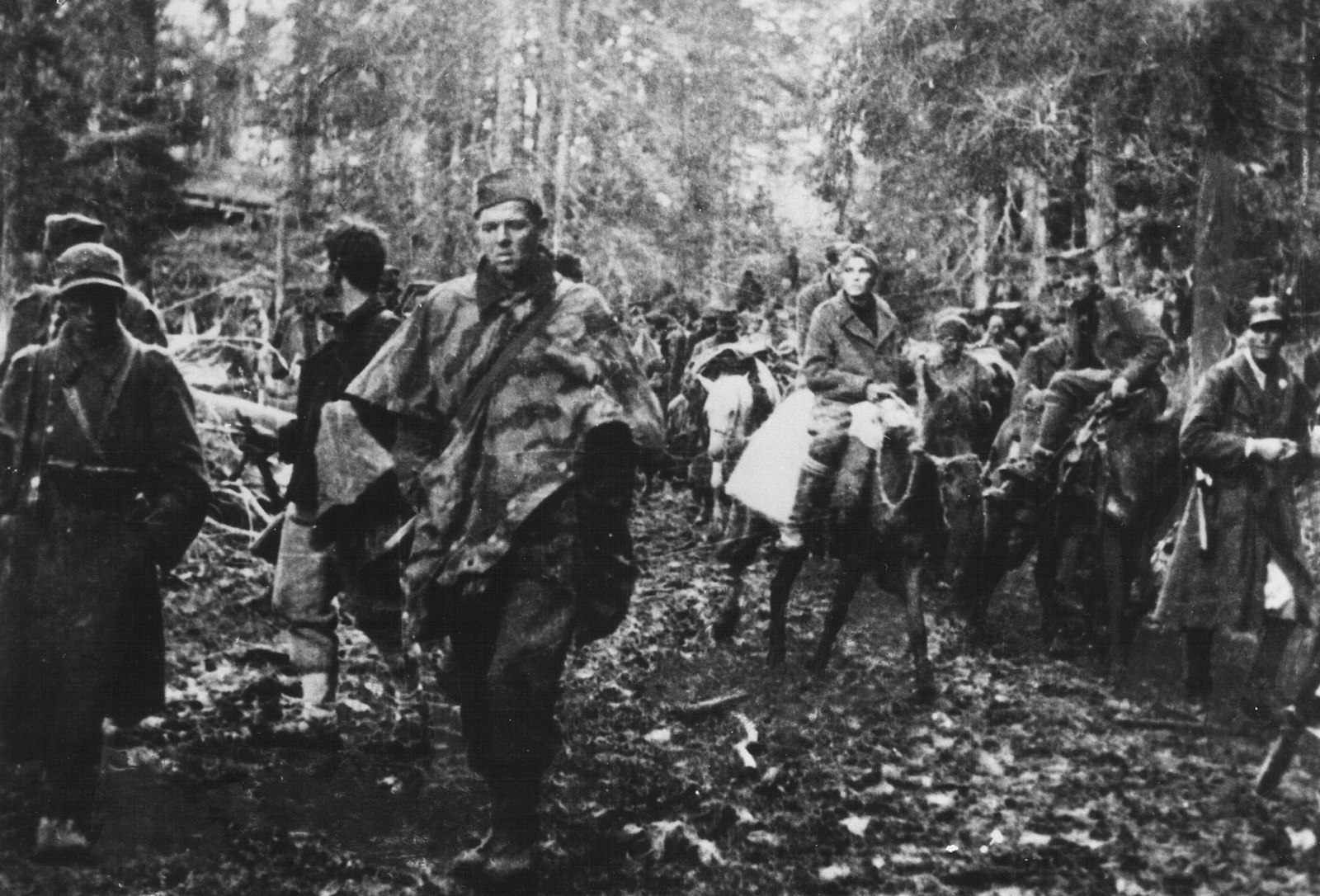
- History
Myth about Sutjeska
The year 2024 marks the 81th anniversary of the biggest and bloodiest battle fought by the Yugoslav National Liberation Army, also called the Partisan army, during World War Two. In the years that followed, countless stories and myths have been written about the Battle of Sutjeska, or the so called Fifth Enemy Offensive. However, such mythology is actually to be expected given the dramatic nature of the event itself.
17/07/2024
Autor: Miha Colner
Post-war Yugoslav historiography and popular culture glorified the Battle of Sutjeska by establishing the myth of a heroic struggle against an enemy many times stronger and much better equipped, and the myth of the tactical brilliance of commander-in-chief Josip Broz Tito, who managed to (repeatedly) fool and outwit his opponents. Furthermore, emphasised was the deep humanism of the partisan High Command, which had the intention of saving some two thousand wounded fighters at all costs. In fact, in addition to the High Command, part of the Partisan army included a central mobile hospital, which was incapable of large movements and breakthroughs due to lack of equipment and personnel. A part of the civilian population, who rightly feared retaliation by the occupying forces, had also fled with the Partisan army; the occupying forces of the Third Reich, and their allies, had terrorised and carried out massacres in the territory of Yugoslavia on several prior occasions. In this sense, Yugoslav historiography is quite faithful to the recorded facts, which show that the Battle of Sutjeska was undoubtedly one of the most decisive battles of the National Liberation Army in which the only objective of the partisans was to break out of the encirclement and survive. The High Command and the majority of troops eventually managed to break through, but almost miraculously and with enormous casualties.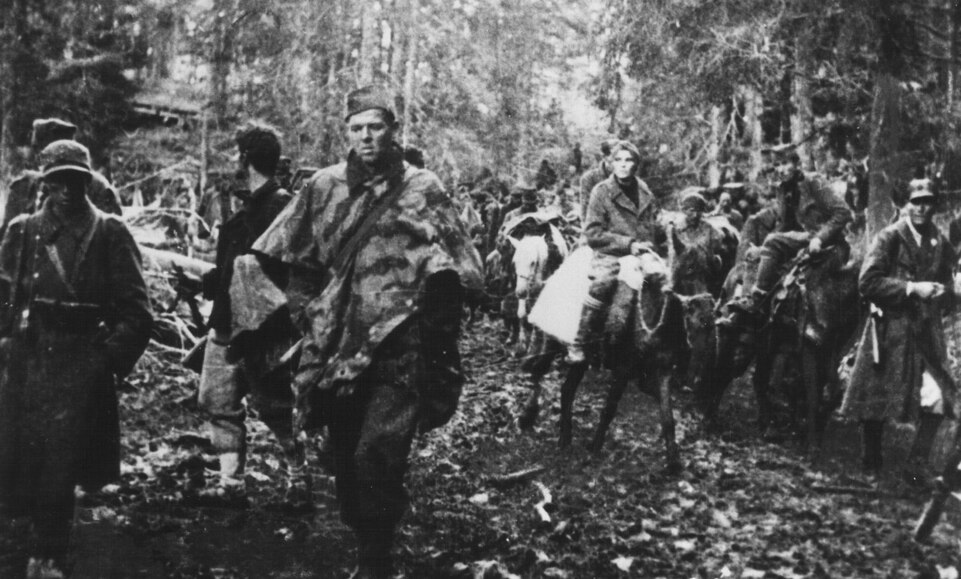
Partisans on the Sutjeska in 1943. Photographed by Žorž Skrigin.
On the other hand, in the past thirty years, a number of revisionist theories have emerged about the collaboration of the Communist Party and the Partisan army with the occupying forces. In fact, in the spring of 1943, a partisan delegation did indeed go to the German army headquarters in Zagreb to negotiate, but it did not negotiate cooperation but an exchange of prisoners.[1] After 1988, the tactical ability of the commander-in-chief Josip Broz Tito and his role in the liberation war were increasingly called into question. After decades of idealised adulation of his military skills, he was suddenly accused of making irrational decisions that led to the deaths of many combatants and civilians. Both socialist myths and, later, revisionist and nationalist speculations have succeeded in obscuring the well-known historical sources that testify to the brutal struggle during the Battle of Sutjeska in May and June 1943.
The Battle of Sutjeska is a complex event that took place in several phases over a period of a month. None of the participants in this overwhelming event were able to experience the full course of events as depicted in the historiography. The experiences and memories of the actual participants in the battle are inevitably far more subjective, plural and varied. The inability of the individual to have an overview of the situation beyond his or her immediate surroundings, made it impossible to perceive events from a “bird’s eye view”, which only history can offer with sufficient temporal distance.
Because of the subjectivity of perspectives and views, photography is one of the most credible sources offering an objective view of the battle, apart from testimonies and written documents. Despite its manipulative and ambiguous potential, achieved through biased framing or contextualisation, the photographs taken by active participants of the battle are perhaps the most direct indication of the reality of the event. Although relatively rare, it is the photographs that bear witness to the immense drama of the situation and the course and significance of the Fifth Offensive. Although our understanding inevitably changes with the transformation of the ideological and political framework, the images remain unchanged – and telling.
The explicitness of the photographs and documents about the Fifth Offensive testifies to the state and status of the Partisan army at the time. Its condition was critical, and at a turning point, caught between imminent destruction and domination. The partisans were not recognised by the authorities of the Third Reich as an army, but as a terrorist group that must be irrevocably destroyed. The Partisan army, although not necessarily the most numerous, was much stronger and better organised than the other paramilitary groups in Yugoslavia, especially the Chetnik detachments, which resisted the occupying forces in principle but, in reality, coexisted with them on the ground, or (at least) they ignored each other. The Fifth Offensive in 1943 had the aim of neutralising the Chetnik movement and completely destroying the Partisan army, which, thanks to its centralised leadership and effective fighting, was the biggest concern of the occupying forces. The partisan troops, as well as many civilians, were fighting for bare survival.
The temporal context is also of immense importance. The year 1943 was undoubtedly a turning point for the Yugoslav resistance movement as the two decisive battles, the Fourth (Battle of Neretva) and the Fifth Offensives (Battle of Sutjeska), took place that year. At the same time, key geopolitical events were being played out elsewhere; the Allied forces, spearheaded by the Soviet Union, posed an ever more serious threat to the German army and their satellites, especially on the Eastern Front. However, the Soviets demanded the opening of a new front in Europe, which would engage part of the German military machine. One option was to land British and American troops on the Adriatic coast. Instead, in July 1943, there was a landing in Sicily, which led to, among other things, the fall of Italian ruler Benito Mussolini and the complete collapse and capitulation of Italy.
An allied invasion of the Balkans would undoubtedly have had an impact on the position of the Partisan army in Yugoslavia as, in early 1943, the British government was still supporting the government of King Petar I Karađorđević of Serbia in exile and the Chetnik formations on the ground. In 1942 and 1943, the media in the USA and the UK still hailed the leader of one of the Chetnik factions, Draža Mihajlović, as a good and fearless Balkan warrior. However, the Chetnik detachments adopted the rather hesitant tactic of waiting for the right opportunity to confront the imperialist occupying forces of the Third Reich; they maintained a truce of sorts with the Germans, actively cooperated with the Italians in occupied Dalmatia and Montenegro and fought almost exclusively against the Partisan army, which was their main rival for the seizure of power after the war.
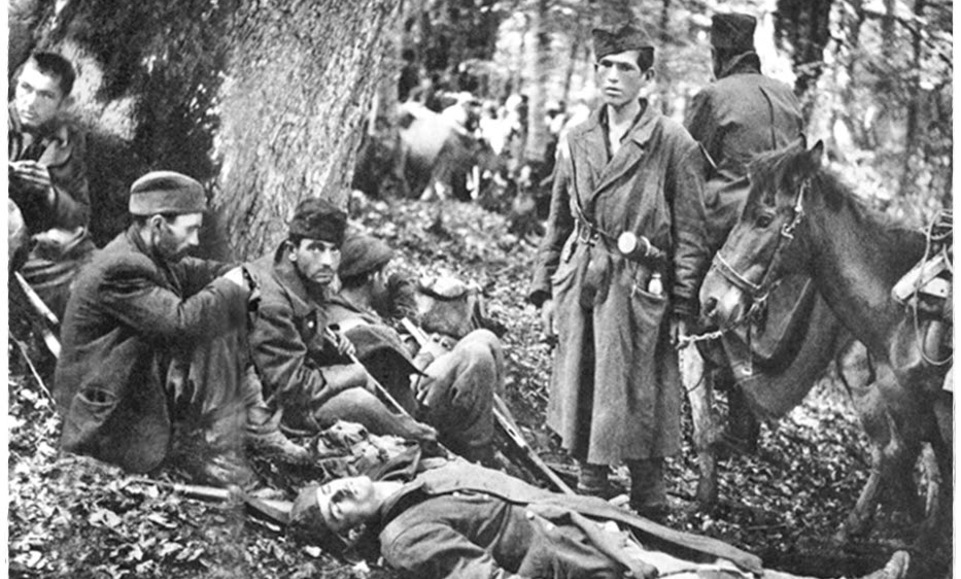
Unwanted Images PF-P-014-52
In 1943, the bulk of the Partisan army was on the verge of collapsing and had difficulties maintaining its combat capability because, just two months before, the forces barely escaped the encirclement in the Battle of Neretva. Barely a month and a half later the Battle of Sutjeska began, which was much better organised by the German forces and hence even more brutal and bloody. It was a fight for bare survival, a matter of life or death. Despite various interpretations and speculations, the month-long Fifth Offensive was above all a slaughterhouse, both for the Partisan army and civilian population, which was subjected to massacres and deportations.
In the Battle of Sutjeska, the German command in Yugoslavia sent the most massive army to date into action, the trained mountain divisions, which, together with supporting units from Croatia, Italy and Bulgaria, numbered 120,000 men, while the bulk of the Partisan army numbered only around 20,000 soldiers, including 2,000 wounded.[2] From the perspective of the balance of power, the myth of the heroic struggle of the Partisan army is thus not at all far-fetched. Sutjeska could have easily been interpreted as the Yugoslav Thermopylae; a few shock detachments protected the retreat of the majority of the army through the ravines, mountains and valleys of the Piva, Tara and Sutjeska rivers at the cost of most of their fighters’ lives. In fact, it was a miracle that the decimated Partisan army was able to retreat through Zelengora into central Bosnia, where the troops of the Third Reich could not follow. The bare survival of the resistance movement, regardless of the casualties, was considered a victory.
The German army on the other hand envisaged the total destruction of the Partisan army and was following the principle “take no prisoners”. All combatants or their companions who were captured, including the wounded and medical personnel, were immediately executed. As the Partisan army retreated gradually, some of the wounded and accompanying personnel remained trapped in the encirclement. When the units that were left behind tried to save their lives, they often had to leave their own wounded behind, hiding them in ravines, caves and cliffs, knowing that their chances of survival were distinctly slim. Some 900 wounded and sick managed to be rescued from the trap, while some 1,300 were captured and killed. In addition to the sick and wounded, the occupying armies executed around 30 doctors and 200 nurses who refused to abandon their helpless colleagues.[3] Their loyalty to medical ethics has cost them their lives.
In every aspect, the statistics of the battle are brutal. The Partisan army lost a third of its men; of the 20,000, more than 7,500 people died. In the post-socialist era, in the new ideological circumstances, this is precisely why the Fifth Offensive has been increasingly characterised as a defeat that was portrayed as a victory by socialist state propaganda. Some contemporary commentators have gone so far as to characterise Sutjeska as a defeat for the partisans and a victory for the Chetniks, who suffered minimal casualties as they simply surrendered, whereupon they were disarmed, disbanded and captured.[4]
Photographic documents from the Fifth Offensive are relatively rare due to the brutality of the fighting and the haste of the action. The most iconic and representative is undoubtedly the photograph by Žorž Skirgin, which shows Dr. Ivan Ribar next to a seated Josip Broz Tito with a bandage on his arm. It was taken on 13 June 1943, immediately after the breakthrough and during the retreat from the encirclement, when the National Liberation Army High Command was still in danger of being captured and destroyed. In post-war socialist Yugoslavia the image therefore represented, above all, the steadfastness of the resistance leaders and their determination to continue the struggle.
Most of the remaining photographs are action snapshots of this big march, with no staged or arranged scenes, no constructed compositions, no conscious posing for the camera. The endless march of the exhausted partisans and their struggle for survival is shown, with columns of combatants and wounded cutting their way through the inhospitable mountainous terrain, while the military operations themselves are not documented. But even such explicit imagery cannot convey the full atmosphere of this struggle as described by the British envoy William Deakin in his book The Embattled Mountain (1971):
The pattern of our lives was reduced to a narrow screen of sights, sounds, and sensations. Except in the air, the enemy was as yet invisible to those of us in the column of the Staff. We seemed to be moving across the landscape of the moon, lit fitfully at night by flashes of gunfire and signal rockets. The mountain was hostile and cold, pitted with the craters of steep gorges and trackless rock-strewn wastes, devoid of human habitation except for the rare clusters of the abandoned ghosts of katuni – the stone shelters of the shepherds in summer. This was our stumbling route and our moving battlefield. The troops ahead of us, and on the flanks, were striving for each height and ridge. Each peak must be dominated, and secured in advance of the enemy. Every step was a grimly contested race to the next summit, lost and won in sharp clashes.[5]
The photographer Žorž Skirgin took another iconic and much-reproduced photograph of a group of partisans retreating up the steep mountainous terrain. In the foreground is a group of exhausted fighters resting during the march across the Milinklade on 9 June 1943. In 1978, Start magazine published an article by Salih Zvizdić, who analysed the photograph in detail and interviewed the living protagonists. The testimonies of the battle’s participants depicted in the photograph are even more brutal and raw than the image itself.
The photograph, which has acquired several titles such as Fighters of the Second Division, Typhoid Patients and Unknown Partisans on Sutjeska, was taken during the most difficult phase of the battle, when the fighters witnessed constant air strikes and artillery shelling, while the fortified positions of the German army were barely 300 metres away, on the Košura hill. The fighters and wounded were malnourished, tired and shell-shocked, some of them lagging behind their parent units. The one lying in the foreground of the composition, appearing to be asleep, was actually dying in a delusional state. He was wounded in the leg and died of gangrene a few hours after the photograph was taken.[6]
Among the photographs from the Unwanted Images archive, only three reveal the events during and around the Fifth Offensive, including the aforementioned one. All of the images show agony, fear, exhaustion and almost hopelessness. The image of the rescue of the wounded by Skirgin shows both the instinctive struggle for survival as well as the humane gesture of his colleagues carrying the wounded. The image of the military column fighting its way, at a seemingly fast pace, through impassable steep terrain, represents the steadfastness and bravery of the partisan fighters. Part of this iconography was later successfully transferred to (popular) culture, especially literature and film, which were able to portray the events of this bloody battle in the most explicit light possible.
The film Sutjeska (1973), a historical spectacle directed by Stipe Delić, depicts the brutality of the fighting and the execution of prisoners and the wounded very explicitly, without hiding the fact that this battle was in fact an organised retreat under heavy enemy fire. Of course, the film completely idealises the depiction of a mythical struggle against a much stronger enemy and – as befits a propaganda film – is quite pathetic in its portrayal of the ease of sacrificing one’s own life for higher goals and ideals.
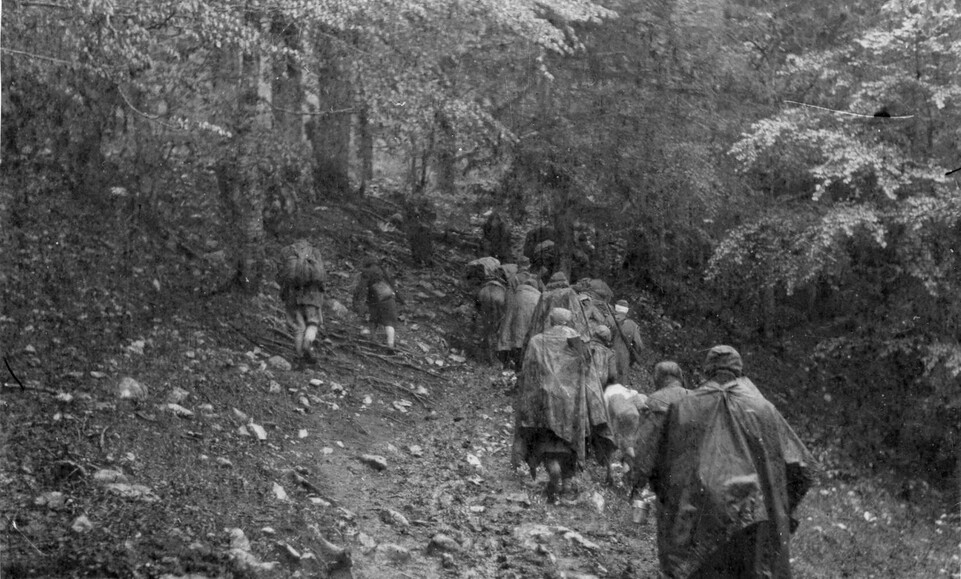
Unwanted Images PF-P-007-30
The photographs themselves, however, cannot in any way impact the changed historical discourses that have been established around the Battle of Sutjeska over the past thirty years. There is no doubt that a partial erasure from historical memory has taken place, as little is said or written about this event today. On the occasion of the 80th anniversary of the battle, there were several celebrations that, however, cannot compare with those that took place before 1988. Moreover, some articles, commentaries and interviews have been published this year, and they are very telling. According to the historian Hrvoje Klasić, the contemporary perception of the Fifth Offensive and the National Liberation War is characterised in particular by the nationalisation of the struggle.[7] Writers nowadays often discuss whose sacrifices, merits and heroism were the greatest on the national basis, which contradicts the distinctly internationalist ideology of the partisan movement.
For example, one of the Croatian media outlets stated that the largest number of partisans killed in the Battle of Sutjeska were Croats,[8] 4,105 out of 7,550,[9] and that the liberation movement was the strongest in Croatia. On the other hand, the Serbian media often state that most of the fighters from Croatia were in fact ethnic Serbs who joined the partisans because of the ethnic cleansing of the Serb population and other minorities conducted by the marionette state of Croatia (NDH) and its army. In Bosnia and Herzegovina, a representative of Republika Srpska recently proposed that a room be added to the Museum of the Battle of Sutjeska that would represent the Chetnik movement as one of the two major anti-fascist movements in Yugoslavia.[10]
Also, the photographs that were taken by the participants of the battle cannot influence the different contextualisations of the event and cannot prevent tendentious changes in historical discourses. These take place on their own, in accordance with the ruling political ideologies. Revisionist views notwithstanding, the Battle of Sutjeska was, despite the heavy casualties, undoubtedly a great victory for the Partisan army. It demonstrated the manoeuvrability and motivation of the partisans as well as transforming them from a guerrilla group into a disciplined army. It is the organised rescue of the wounded that is the main characteristic of a regular army, which looks tactically to the future and is always avoiding unnecessary losses.
After breaking through the encirclement, the partisans, despite their previous heavy casualties, managed to capture a large territory in central Bosnia, which was poorly defended due to the concentration of forces in the Fifth Offensive.[11] At the same time, in the second half of 1943, the Third Reich’s army was shattered and was no longer capable of larger and complex operations. Their unenviable position on the Eastern front, their defeat in North Africa, the capitulation of Italy and the Allied landing in Sicily gave the partisans a new impetus. It was also at Sutjeska that a fateful political turning point took place, as the British and Americans finally recognised the Partisan army as the leading force in the fight against Nazi Germany. The balance finally began to tip in favour of the anti-fascist coalition. Only a few months after the bloody Battle of Sutjeska, the second session of the AVNOJ [Anti-Fascist Council for the National Liberation of Yugoslavia] took place in the town of Jajce in Central Bosnia on 29 November 1943, which was also the founding congress of the formation of the new state: socialist Yugoslavia. In 1944, the British government called on all Chetniks in Yugoslavia to join the National Liberation Army, otherwise they would be perceived as Nazi collaborators and enemies.[12]
The photographs taken by the participants of the battle cannot represent historical and political discourses on their own, as they are always subject of different interpretations and contextualisations. The same images that would have been described as symbols of heroism in the Yugoslav post-war period can now be easily presented as images of uncertainty, panic and mortal fear. The battle can only be reconstructed and interpreted with the appropriate temporal distance, by historians and war analysts who, unlike the participants, have an overview of the (past) situation. The experience of the protagonists of the battle, on the other hand, was probably more akin to photographic material: it was inevitably taken out of context, incomplete, but undoubtedly brutal and traumatic.
All the photographs documenting the Battle of Sutjeska were taken by its participants, who inevitably saw the events from their own subjective perspective. Their fear and their determination are evident even in the most instant and raw photographs taken in action. However, given the gravity and drama of the situation, the very fact that the partisans even bothered to take photographs in spite of extreme situation is remarkable – they obviously believed that they had a chance to survive, that they would win and that one day they would be able to show these photographs to someone.
[1] Milovan Đilas quoted in “Jugoslavija u ratu 1941-1945: Epizoda 14, Belo i crno [Yugoslavia at War, 1941-1945: Eipsode 14, Black and White],” RTV Beograd, 1992, documentary video, https://www.youtube.com/watch?v=1BYryuzgogo&t=238s.
[2] Gregor Jazbec, Bitka na Sutjeski [Battle of Sutjeska] (Gornja Radgona: self-published, 2020).
[3] “Bitka na Sujesci [Battle of Sutjeska],” Povijest četvrtkom, HRT Zagreb, June 17, 2021, https://radio.hrt.hr/slusaonica/povijest-cetvrtkom.
[4] Miroslav Samarđić, “Bitka na Sutjesci, partizanska katastrofa [Battle of Sutjeska, Partisan Catastrophe],” June 15, 2021, podcast, https://www.youtube.com/watch?v=RHLg3srlSqA&t=31s.
[5] Frederick William Deakin, The Embatled Mountain (New York and London: Oxford University Press, 1971), p.14.
[6] Salih Zvizdić, “O poznatoj fotografiji,” Start, 1978, http://www.yugopapir.com/2017/11/bitka-na-sutjesci-milinklade-kako-je.html.
[7] See Tihomir Pološ interviewed by Dario Špelić in “Bitka na Sujesci [Battle of Sutjeska],” Povijest četvrtkom, HRT Zagreb, June 17, 2021, https://radio.hrt.hr/slusaonica/povijest-cetvrtkom.
[8] Vedran Brkulj,“Poraz koji je postao pobjeda: osamedeset godina od bitke u kojoj je poginulo tri tisuće Dalmatinaca,” Tportal, June 17, 2023, https://www.tportal.hr/vijesti/clanak/poraz-koji-je-postao-pobjeda-osamdeset-godina-od-bitke-u-kojoj-je-poginulo-tri-tisuce-dalmatinaca-foto-20230617.
[9] Viktor Kučan, Borci Sutjeske [The Fighters of Sutjeska] (Belgrade: Zavod za udžbenike i nastavna sredstva, 1996).
[10] Špelić,“Bitka na Sujesci [Battle of Sutjeska].”
[11] See Hrvoje Klasić interviewed by Boris Pavelić in “Bitka na Sutjesci bila je prekretnica jer je nakon nje Churchill definitivno odlučio pomagati samo partizanima,” Nacional, January 22, 2023, https://www.nacional.hr/hrvoje-klasic-bitka-na-sutjesci-bila-je-prekretnica-jer-je-nakon-nje-churchill-definitivno-odlucio-pomagati-samo-partizanima/
[12] Branko Petranović quoted in “Jugoslavija u ratu 1941-1945: Epizoda 16, Britanski ulog ili zavera [Yugoslavia at War, 1941-1945: Eipsode 16, British Bet or Conspiracy],” RTV Beograd, 1992, documentary video, https://www.youtube.com/watch?v=oxu6Bj4Xqvw&t=3262s.

